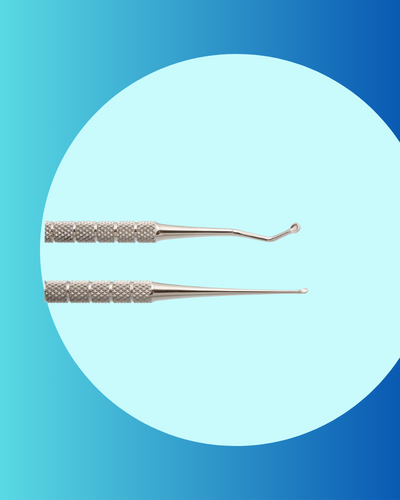
Stainless Steel
There are over 400 types of stainless steel. Stainless steel is an alloy and is man-made.
Most surgical instruments are made from 4/20 (four twenty) grade stainless, its salient characteristics are its 14% chromium content which gives it its “stainless” properties. 4/20 is magnetic, due to its iron content which can of course rust.
A process called passivation (a nitric acid mix) is used to etch away the surface iron molecules, until the chromium molecules arrive at the surface.
This ultra-thin layer of chromium prevents moisture coming into contact with the iron molecules – prevents surface rusting – this is also why you should not engrave instruments. This would break the passivized layer, therefore causing rusting at the engraving site.
4/20- steel is also capable of “self-healing”. Where the passivized surface is damaged, rusting occurs until the chromium molecules are exposed. Joints are more likely to produce rust deposits since the joint action wears away the passivized layers especially if not lubricated. The passivation treatment is also less likely to deeply penetrate the joint crevasses.
By adding more chromium we can increase the resistance to rust and staining. However higher chromium content stainless such as 3/16 (three one six) is much softer and is useless for cutting edges.
Equally, we can use less chromium to achieve greater hardness.
Surgical Instrument Forging
There are 3 methods: Hot forging, Cold forging and casting.
Cold forging is good for plastic handled kitchen scissors where the blades are usually 2 to 2.5mm thick.
A nipper handle would need 250-300 tons of force applied to cold steel, but only 20-30 tons in hot steel. Apart from the energy wastage, cold forging sets up minute stress fractures when used on thicker sections of steel. These are impossible to passivize and can harbor dirt and bacteria.
Generally, cold forging is a poor alternative for surgical instruments and is not used.
Casting, again, is not generally used in that the molecular structure tends to be brittle, and damage can occur by dropping onto a hard surface (a floor!) casting does have one great advantage, it’s very accurate and very repeatable. For example, the orthotic scissors with “self-tightening” alignment joints are cast because this accuracy is needed. So, it’s about selecting the correct steel, the correct hardness and the right forging process.
Standards and Validation of Instruments
Everything so far is wrapped up in British Standards No 5194 Sections 1-4 entitled “Surgical Instruments”.
Be aware of laboratory instruments which might look the same, but do not need these standards as laboratory instruments are not designed for use on humans. They are generally made of low grade stainless (6% chromium) and are un-passivized.
Many German companies CE mark as a manicure item, they are not CE marked as Class I medical devices, and in theory should not be offered as such. It is worth checking CE classification. (This is relevant to some chiropody/podiatry instruments – they are CE marked as cosmetic/manicure items).
For the past five years it has been mandatory (in the U.K.) for all surgical instrument companies to provide a validated cleaning process. That is to say, a written procedure which has been microbiologically tested to prove it works.
Any company which cannot do this cannot claim a device is CE marked as a Class I Medical Device. It is a requirement of a Class I medical device. All podiatry instruments are Class I Medical Devices.
It is also worth noting that it is illegal to buy, sell or even give or receive free of charge a non CE marked product, or an incorrectly labelled CE marked product.
